Text
Website Announcement!
CCM's website is currently down and will be for at least a month. We had to abruptly end our relationship with our web hosting platform and cannot recover our domain name for 30+ days. We also cannot use our email accounts until we own our domain name again, so if you'd like to reach us, please contact us at [email protected]. In the next month or so, we will be working to bring the website back up, hopefully with some improvements! Keep an eye out for more updates.
We sincerely apologize for the inconvenience and ask for your patience during this transition period.
0 notes
Photo

Astrology in Art
Gracie Neirynck, Publications Director
Astrology today is, I hate to say it, a bit of a joke. It makes you think of Buzzfeed and CO-Sign and while all that's well and good, they don’t have any sizable impact on your livelihood (or at least I hope not). Maybe that's because when we go out late at night, with a baggie hoodie draped around our shoulders and the wind is rustling through our hair and we look up at the sky, most of what we see is smog, littered with one or two sparkling stars. Our relationship with stars has drastically changed because we only ever see a handful of them at a time. Before this however, stars had a very real impact on mechanics of life and art.
Here are a few examples of ancient architecture which was inspired by stars:

Chaco Canyon, New Mexico

Temple of Sun, Machu Picchu, Peru
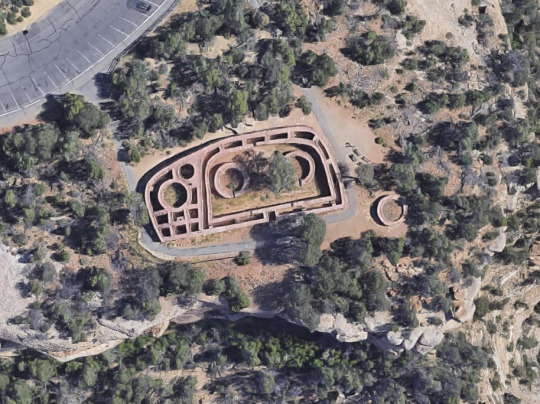

Sun Temple, Mesa Verde, CO
The designs of these archaeological sites, as well as countless others are aligned with astronomical patterns in the sky above. In fact, these temples were often used for astronomical observations. Astrology has influenced the ways in which entire buildings and civilizations were constructed. When people were able to see the stars, they integrated their patterns into their daily lives. The fact that we can no longer see their patterns daily when we look up to the sky makes it far more difficult for people to align their lives with the patterns of the stars today, so what we have now in the digital age is something a little more detached from the stars.
While this is sad, certainly, so many people's attraction to astrology is kinda awesome. After all, all organic matter comes from dead stars, so our lives are intrinsically tied to them. Even if we don’t build monuments based on star placement, we still strive to be connected to them. Even with something as simple - and detached - as a horoscope.
Image Sources:
https://whc.unesco.org/en/list/353/
https://killaexpeditions.com/winter-solstice-machu-picchu/
https://thetrekplanner.com/sun-temple-mesa-verde-national-park-colorado/
https://www.nps.gov/meve/learn/historyculture/mt_sun_temple.htm
0 notes
Text
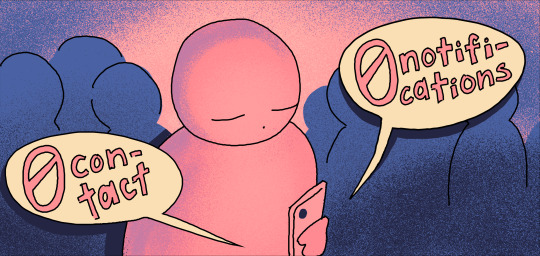
Disjointed Creative Communal Isolation:
The Plight of the Quarantined Creative Community
Denise Zubizarreta, Creative Team Member
Art in isolation isn’t a new concept, many artists feel as though the isolation opens the creative mind allowing for a comprehensive connection to their work that supersedes the need for community. Edvard Munch faced a similar quarantined way of life (as we are now) in childhood. With his mother and sister dying of tuberculosis; this involuntary isolation fueled his creativity, utilizing his emotional experience (to work through his hands) in order to enhance his creative expression. Though isolation plays a significant role in the creative process, there is a much larger force that breeds ideas and motivates them into fruition.
In their research on “Deconstructing the Lone Genius Myth”, researchers Alfonso Montuori and Ronald E. Purser write:
Creative expression always occurs within a cultural and historical milieu. Any discussion of creativity inevitably needs to be situated within a historical, but also sociopolitical, context. It is therefore not possible to speak of a “generic” or “universal” creativity: What is considered creative today in the United States may not have been considered creative in the same geographical area 500 years ago, and may also not be creative in China today. It is therefore important to develop an understanding of the “genealogy” of creativity and the contextual influences that led us to consider works to be creative in our present period.
They pose the most current question and concern, how has creativity in today’s market changed the way creatives develop their crafts? With the meaning of “community” feeling loose in today's world, social media sites like Facebook and Instagram have fostered a disjoined communal creative isolation that has become the norm. Breeding the isolation so many are perplexed by today. Gone are the days of Munch, isolated truly, with few tasks to choose from in order to fight the burdening boredom. The world may see a shift in their communities but artists have been flourishing behind these scenes, as technology has connected even the most agoraphobic of creative minds. Those who seek the connection of the outside world are finding themselves consumed by the complexities of their most inner circle, home. Breading a need for creative expression but void of the universe's tangible vastness, only to cling to (what may be seen as) the mundane. British artist Gareth Fuller is exploring the challenge:
Each day for two weeks, Fuller depicted his experiences and thoughts from inside his 590 square foot apartment. The result is a series of 14 drawings titled “The Quarantine Maps.” …By day 9, Fuller finds himself thinking beyond the parameters of what he could see. The series becomes less about the artist's personal triumphs and more about capturing the experiences of those who are just beginning to make sense of the crisis.
Other artists like Ray Materson found purpose in isolation, a way to ease the mind and find control in the uncontrollable. Teaching himself to embroider in prison, his threads of unraveled socks depict not only the internal processing of his drug addiction, but the imagination of a life outside of his shackled existence. What does this mean for the current masses and their exploration of self in the continual pursuit of healthy coping mechanisms (that were difficult to find already)? The artistic community has not only connected but it has cultivated an online presence that keeps the modern artist feeling unified during the most uncertain of times; with an ever-streaming flow of validation that their existence is not futile. The artist’s plight is to allow the sense of community to be as pliable as their imagination and somehow harnessing that peace in the most unimaginable of paroxysms.
Some choose to create based on the isolation itself. Others find solace in the connectivity we’ve fostered through an online experience, that is only being fortified more intensely as we continue to socially distance our energies. The artist finds itself now consumed with how to plug-in to the intensity of the masses. Striving to unify the world through visuals that connect us, although we find ourselves strategically isolated.
The role of the artist remains the same today as it was yesterday when they had their “freedom of social distance” - the change here and call to action is the artist coming to the realization that “community” can be regarded for its boundlessness. Distance truly matters not, with our cultivation of modern technology. What matters now is how we cultivate the essence of that disconnection, interpret it and showcase it to the world; not only for our own sanity but for the collective exhale of a society at large, in desperation for a full-bodied organic transmission in an overwhelmingly digital existence.
Bibliography
Christensen, Tanner. “The Role Isolation Plays in the Creative Process.” Creative Something. Last modified December 10, 2018. https://creativesomething.net/post/2018/12/9/the-role-isolation-plays-in-creativity.
Di Liscia, Valentina. “The Artists Who Found Inspiration In Isolation.” Hyperallergic. Last modified March 20, 2020. https://hyperallergic.com/548698/artists-isolation/.
Montuori, Alfonso and Ronald Purser. Deconstructing the Lone Genius Myth: Toward a Contextual View of Creativity. Journal of Humanistic Psychology - J HUM PSYCHOL., 1995. 71.
Stewart, Jessica. “8 Startling Facts About the Troubled Life of Edvard Munch.” My Modern Met. Last modified March 12, 2020. https://mymodernmet.com/edvard-munch-facts/.
Tsui, Karina. “What Happens When a Map Artist Goes Into Quarantine.” CNN, Style. Last modified March, 2020. https://www.cnn.com/style/article/gareth-fuller-maps-coronavirus-quarantine/index.html.
0 notes
Photo

Gothic Influence in Horror Art
Gracie Neirynck, Publications Director
Gothic art may make you think of poorly painted Medieval friezes, but this spooky season, let’s think about another form of Gothic art. Art inspired by the themes of Gothic fiction, also known as Gothic Horror. Read more to see the work of 6 talented artists who evoke the Gothic themes of sadness, fear, and terror in their work.


1. Enrico Robusti
An Italian painter, Enrico Rbusti completed a degree in Law before starting a career in the arts. Although the paintings don’t have typical gothic elements, I think there's something wonderfully horrifying about his style.


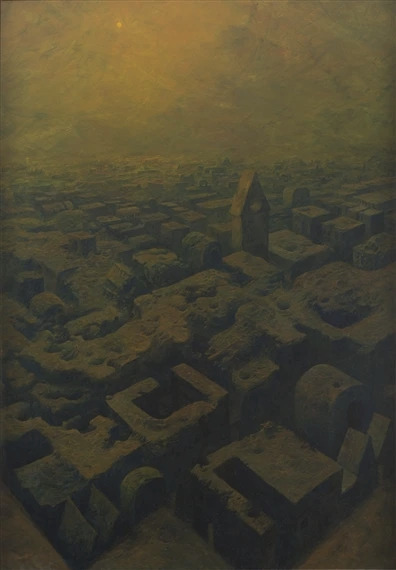
2. Lukasz Banach
Known better under his pseudonym Norman Leto, Lukasz Banach was born in Poland and was a self-taught artist interested in both painting and video production. He became friends with Zdzislaw Bekinski (a painter towards the bottom of this list), who influenced his form and style.
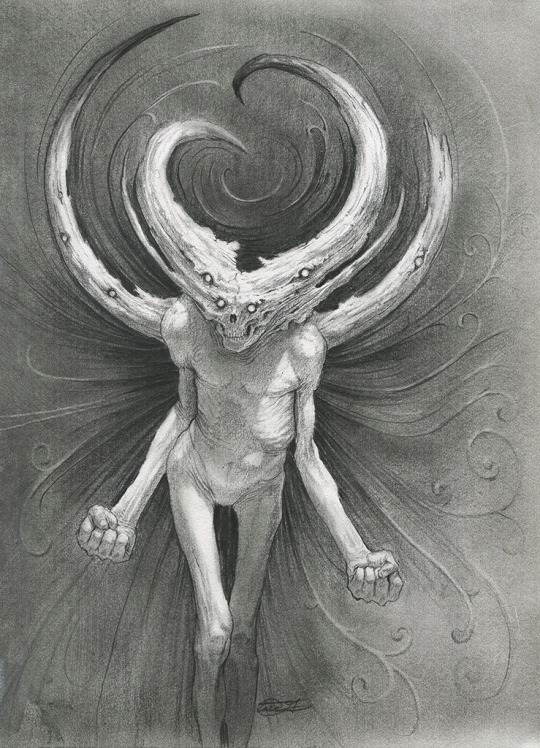
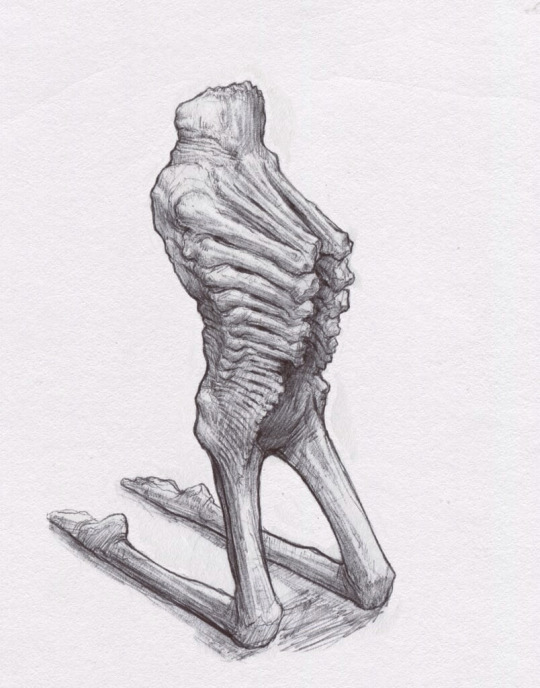
3. Anastasios Gionis
Anastasios Gionis is a character modeler and texture artist who creates different monster concepts for tv and video games.


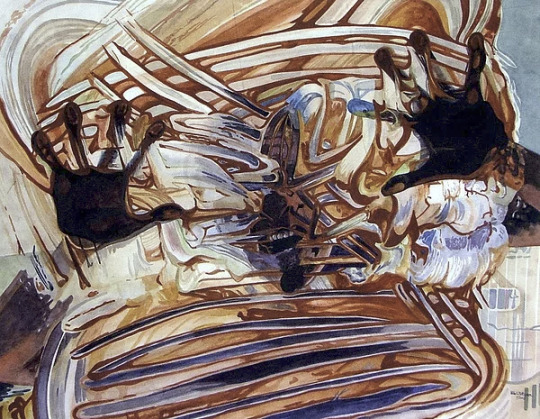
4. Valerie Patterson
Valerie Patterson uses primarily watercolor to enliven her paintings. Although her paintings are much more psychedelic than gothic, her works still have an eerie feel to them.
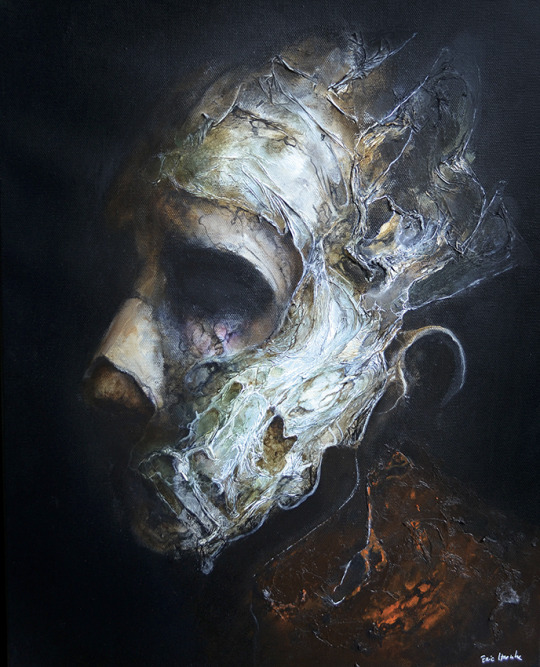

5. Eric Lacombe
Another self-taught artist, Eric Lacombe is both a digital artist and painter who uses mixed

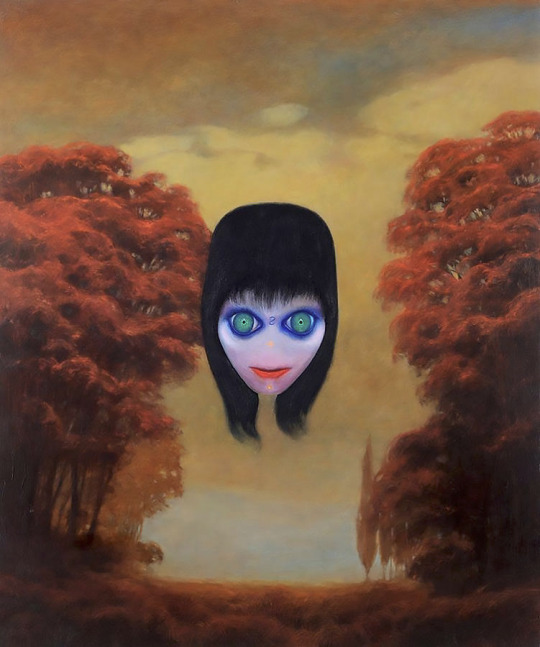

6. Zdzisław Beksiński
My personal favorite on this list, Zdzisław Beksiński was a Polish artist. Although his paintings display gothic and utopian elements, Beksiński was recorded as being a positive and pleasant man who refused to analyze his own paintings or attribute one sole meaning onto them. Zdzisław Beksiński was stabbed to death in 2005 by a 19-year-old presumably because he refused to lend the boy 100 dollars.
0 notes
Photo

I Guess We’ll Never Know: Ambiguous Endings in Horror
Anna Dunn, Managing Editor
The best horror movies have ambiguous endings. Endings that make you leave confused, in disbelief, and searching the internet for more details and answers. The movie remains in your head, and you’re stuck thinking, what happens next?
Ambiguous endings are the opposite of catharsis. Where you expect a release of tension, you instead get confusion and a desire to know more. But this is the ideal outcome of horror, which wants you at the edge of your seat the whole team, and often is focused on thematic notions rather than technical plot.
The best example is El hoyo (aka The Platform) a Spanish film that debuted on Netflix in March 2020. El hoyo takes place in a fictional society in which hundreds of people are kept together, two to a floor, in a massive tower. Each floor is a single room with a hole in the middle, which a flat platform full of food passes through once a day. Each floor gets several minutes to eat what they can before the platform descends to the next floor. The platform was designed to have just enough food for every inmate, but that design implies that those on the top floor, with first access to the food, will only take what they need. Of course, as anyone below floor 50 learns, no one acts with the whole in mind. Hunger takes over, and those at the button turn to each other to feed.
The themes of gluttony and selfishness, catalyzed by privilege, were especially impactful in March 2020, when many Americans refused to socially distance in favor of routine, normalcy, partying and the abstract notion of American freedom.
Without totally revealing the ending (go watch it for yourself, especially if you were a fan of Squid Game), El hoyo ends with a single, blurry shot of a character about to leave the tower, but with no actual exit. There is no Hunger Games-style triumphant overhaul of the unjust institution. There is not even much consideration of the architects of the tower. The ending is abrupt and unclear, leaving the viewer with only a blurry, rapid-paced final shot.
A far more famous horror movie, The Thing, used ambiguity to create impact, as well. In The Thing, it is never confirmed that the alien creature is killed, and the viewer is left just as paranoid and suspicious as the main cast was throughout the majority of the movie.
In The Shining, ambiguity is used to twist the ending. It reveals that the main character, Jack Torrance, can be spotted in a photograph from the 1920s. That revelation is not followed by any additional details, and the viewer has to consider all the hints throughout the movie of what that could possibly mean.
This kind of ending is my favorite in all kinds of movies, but especially in horror. Without a clear resolution, the tension that has been built up throughout the whole movie seems to carry, and it’s not until the credits roll in that the viewer realizes they can breathe again. The catharsis comes from realizing that you are free from the stress of the film.
An ambiguous ending also focuses the final few moments on the film on the emotional or philosophical themes of the film. Injustice, paranoia, madness. In El Hoyo, the ending leaves the story figuratively contained within the levels of the tower. The focus is not on the unfair institution, but the impact that has on the people trapped within it.
The calming release of catharsis is unnecessary in horror; you want to leave the theater feeling rattled and even confused.
0 notes
Photo

On Healthy Escapism
Jay Serrano, Editorial Director
Escapism gets a bad rap, understandably so. It’s often perceived as someone running away from their feelings by refusing to engage with reality--an unhealthy coping mechanism. Conventional wisdom says that the Right Way™ to deal with negative emotions is to feel all of it and work through the weeds of it. Maybe you talk it out with friends, have a good cry, or draw a bubble bath.
I’ve tried all that. It makes me feel worse.
There’s a fine line between examining your misery and languishing in your misery. The idea that the best way to process your feelings is to “sit with them” simply doesn’t work for everyone. And it doesn't have to. Especially not now, when the world seems to get bigger and more stressful every single day. There’s no escaping COVID. Or racism. Or misogyny, or ableism, or transphobia. Sitting with those feelings won’t necessarily resolve them because they’re based on externalities that you can’t control. In my case, “sitting with” those feelings leads to rumination and obsessive thinking, causing a doomsday spiral. It’s not productive for me and I’m tired of being told there’s only one valid way to cope.
I remember my life in media phases--kindergarten was Yu Yu Hakusho, 5th grade was Linkin Park. 10th grade was Agatha Christie. 12th was Terraria. Media interests serve as time capsules for me; escapism has always been my most useful coping tool. When times get especially difficult and I’m too overwhelmed, I don’t want a goddamn bubble bath or to talk about it. I want to shut my brain off and rewatch anime I liked as a child.
Oftentimes, what happens is that once my stress comes down, I can actually examine my feelings without imploding. I’ve regulated myself back to a baseline. I need to calm down to get perspective, and one way to achieve that is to be distracted by a story that has nothing to do with the here-and-now.
I won’t pretend it hasn’t ever been dysfunctional. I find it’s extraordinarily effective--perhaps too effective. All coping strategies must be tempered. Too much of a good thing is a bad thing. Ground rules must be set. These are my personal guidelines:
Set aside specific amounts of time. Schedule your escapism. For some people, this looks like playing half an hour of their favorite video game every day. For some, it means blocking out a whole day to get all their escapism in.
Choose media that will regulate you. If you’re immersing yourself in media that you used to like, but now reminds you of your mean high school friend and creepy boss at McDonalds, it probably won’t comfort you much. It’ll get your mind off the here and now, but do you really want to go there?
Don’t feel guilty. As long as your responsibilities aren’t shirked and you’re in one piece, you’re doing fine. Too often, we’re made to feel guilty for not being productive. But you don’t have to be productive. You don’t have to justify your existence.
If you process your feelings best by sitting quietly and thinking about them, fantastic. If talking it out with your friends and being surrounded by people makes you feel better, great. But if you’re like me and you know that letting yourself fall apart will do more harm than good, don’t feel bad about needing a few hours to get away from everything.
0 notes
Photo
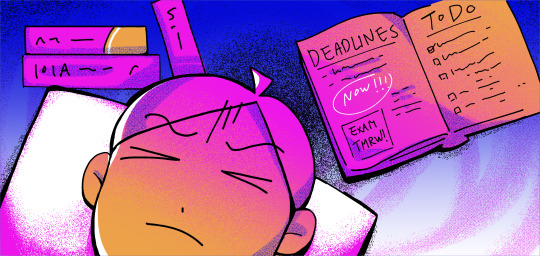
Margin Doodles of a Monster Named Stress
Gracie Neirynck, Publications Director
Sometimes stress can take hold of you, reaching its withering hands around your body, plucking at your heartstrings like it’s playing guitar. If you’re like me (unprepared and disorganized), then the beginning of the school year can be particularly stressful. The stress monster can linger at the corner of your eyes, fading into a haze when you try to look at it head on.
I’ve done my best to confront that stress, and hopefully explain what happens to you when you get stressed. When you experience stress, the amygdala, the emotional center of your brain, sends signals to the hippocampus.

The hippocampus, which regulates memory, then sends signals to the rest of the nervous system, sending your system into a state of flight or fight.

This can increase your heart rate and heighten your senses, and prompts the release of cortisol, a hormone related to your stress response. Stressful events send us into a state of preparing for danger which isn’t necessarily there, and while stress can be healthy in moderation, it is important to recognize the effects it has on our bodies.
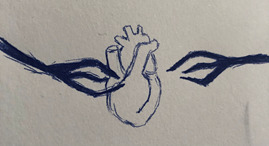
0 notes
Photo

How did he do it? What Bo Burnham’s Inside can teach us about taking on complicated projects solo.
Anna Dunn, Managing Editor
Bo Burnham’s comedy special, Inside, was released at the end of May to critical acclaim and wide approval. The piece was entirely self-made. Bo wrote the script, the songs, arranged the lighting, collected all the props, shot each clip edited the hour long piece, and served as the main lead.
As an artist who has tried (and struggled) to create film content entirely by myself, I found the special to be extremely fascinating. It served as a lesson in human capability. I found three aspects of it especially intersting:
The nitty gritty
Emotional management and wear
Developing instinct

1.) The nitty gritty
Taking on a project all by yourself inevitably means taking on several skills you did not previously have. Bo has experience with light and sound design, but it is obvious that he experimented with new media and techniques throughout the production of the special. Developing experience in new skills can be done methodically through research or more organically through trial and error. Either way, it will take time. Skill development should be acknowledged as a long - and oftentimes boring - process. Charging head-down into a new project sounds like a more fun option, but it’s unrealistic when you have to tackle skills outside of your wheelhouse. It’s worth the investment to intentionally set aside time and teach yourself new skills.

Emotional management and wear
The comedic (and chilling) songs that make up the bulk of the special are tied together through rough, unstaged clips of Bo editing, exhausted, in front of his computer, or shouting when a recording sounds stiff. These scenes were a reminder of that there is an emotional toll behind taking on a large project entirely solo. Being the sole creator of a piece of work is a test of character. Testing out new camera angles over and over, rewatching clips you’ve already seen, knocking over expensive equipment while already frustrated, makes it tempting to quit. The special reminded me that I’m not alone in wanting a rage-quit out of a project, and that project planning should expect some sort of emotional cooldown.
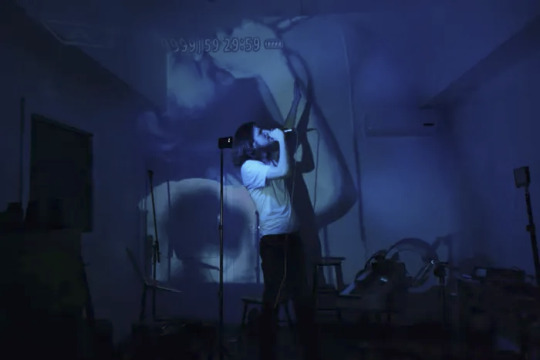
Developing instinct
Diving head-first into a project with no research can lead you to a pit of frustration, but it is also important to allow yourself to let go of the plan when the time is right. The goal of research is to develop a sense of artistic instinct, so that you internalize all the techniques and details and begin working beyond the original plan. This doesn’t mean to just let your work wander, it just means shifting rigid plans into more flexible guiding principles.
As you plan the theme of the work, pinpoint the exact emotion and messaging that you want to convey. You can adjust your work throughout the process and go beyond the initial bounds you planned in order to genuinely pursue that guiding mission. An example of this is one of the final songs of the special, “Eyes on me.” It is clear that Bo hasn’t totally rehearsed the song. He isn’t acting (like How the World Works), he isn’t in total sync with the backgrounds (like in Sexting) and he isn’t focused on playing the keyboard and controlling lights (like Welcome to the Internet.) He’s just singing. And looking into the camera. And feeling the song. And feeling the anger. Here, Bo has fine tuned his instinct to feel out the emotional frustration and sadness that is the essence of the song. He left the plan behind, and used all his skills, experience, and instincts to guide him.
1 note
·
View note
Photo

Fill! Your! Pages!
Peyton Farnum, Creative Team Member
Finishing something you worked really hard on might just be one of the best feelings in the world. But what makes this accomplishment feel even more fulfilling? When you planned every step of the way!
As an artist with a constant myriad of ideas for projects, carrying out said projects can be more chaotic and disorganized than necessary. I found that sometimes the process of one piece would be mixed up with the potential ideas for another, which made it difficult for me to stay focused. Luckily, I find solace in utilizing the empty pages of my sketchbook and my desire for aesthetic organization. To create more clarity, I started designing pages dedicated to sorting out my ideas for all of my projects. These helped me keep track of the goals I had for my work, such as subject, messages/themes, inspirations and stylistic choices.

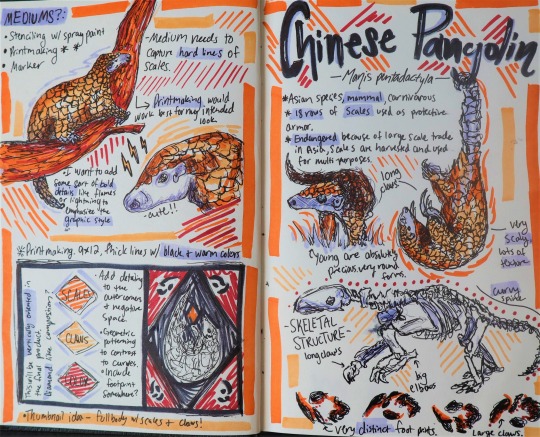
Here are two of my pieces and their planning pages from a past portfolio about endangered species of wildlife. I began with choosing the animals I wanted to focus on and researching them. (Sometimes these choices came with inspiration from other media, such as books!) For these pieces, I chose the Chinese pangolin and the okapi. I completed studies of their forms and colors in the wild and assessed how I wanted to convey them in my work, leading up to thumbnails and design ideas for the final. Alongside these studies came aesthetic and technical decisions such as color schemes and mediums. In my pangolin piece sketches, I noticed that the pangolins' rigid scales fit together like a puzzle, allowing me to visualize a piece that focused less on depth and more on positive and negative shapes. I decided to try out printmaking to best convey the species stylistically and along came a design that resembled a maze around the animal. This was a great experiment for me and I fell in love with printmaking.


In my okapi piece, I worked from a base idea of a scene in Barbara Kingsolver’s The Poisonwood Bible in which one of the characters meets an okapi in a jungle. The scene is treated as a sacred and mysterious moment that I felt captured the alluring nature of the okapi--it quickly became one of my favorite scenes in the story. While making my planning page, I decided to take it a step further in my own ideas and create the appearance of an okapi that was more grand and fictional to add to the mythicality of the work. I realized with the dense jungle background that I would need a medium that would be good to layer with. That’s how I arrived at my watercolor conclusion, which was further solidified after I did some color swatches with them on my planning page. The myriad of blues and greens really caught my eye and I ended up using them in the final. Needless to say, having a few pages to just jot or doodle down ideas led me down so many avenues of possibility! I don’t think my completed pieces would have developed to their full potential without them.
Although I won’t discredit the excitement that spontaneity brings, I will admit that these planning pages have helped me immensely as an artist. Some of my most successful pieces began with me jotting down simple ideas, followed by filling the page around them and watching them grow into the final projects.
Planning doesn’t have to be monotonous or boring, it is only meant to help you! Make it a fun part of the project. Decorate with color, doodles, collage elements, medium experiments, subjects studies, literally anything! Just discover your own method of creating organized chaos and fill your pages.
TLDR; no matter what kind of creative you are, you may benefit from filling your lists or sketchbook pages as much as you can. Write/draw/make note of everything that comes to your head. You never know what may inspire you or take your projects to the next level of amazingness and originality!
2 notes
·
View notes
Photo

17 years ago: the last Brood X
Molly Flood, Communications Director
The spring of 2004 raised two kinds of children. I, a proud four and a half year old, spent my time playing outside with toys and picking apart the lawn while a swath of angsty 17 year olds also emerged into the open air, ready to scream all summer long.
This new insect invasion added a whole new level of mischief to my summer days as I collected my cicada friend's empty exoskeletons and hung them all over my sister's coat when she wasn’t looking. I imagine the teen cicadas rolled their five eyes as my immaturity.
The year 2004 was a particularly strange one for these ancient creatures to enter the eastern United States. This was the time that the human population stumbled into the digital age and pop culture began to viralize events. The cicadas waited seventeen years to emerge into the future, but entered into an America that was obsessed with internet culture and paid no attention to their marvelous arrival.
Bold Brood X popped their heads out of the ground to the background noise of limelight celebrities making their place in the world. Paris Hilton’s “that’s hot” and Donald Trump’s “your fired” coexisted peacefully in the world of reality TV, far from the whitehouse. Brood X played their own recognizable phrase: a high pitched buzzing reaching 100 decibels, that masked Trump’s and Hilton’s voices blaring from the living rooms of America.
While the cicadas lived their short lives to the fullest back in 2004, Facebook was taking over the internet and shaping the American reality. Through the eyes locked into Facebook in 2004, American’s learned that Martha Stewart would be spending time in prison while memes about the newly released Napoleon Dynamite spread awkward core through the internet.
The teen cicadas,who rebelliously dug up from their subterranean homes, shouted their last thoughts and perished in a matter of weeks. In their short lifespans, they saw America through the lens of it’s awkward emergence into the internet, social media, and pop culture buzz. 2004’s brood’s screams masked the worlds of Trump and Zuckerberg’s America to enjoy a peaceful summer.
Their children enter a new world, one that only the most perceptive eye would have guessed would exist. What slogan and internet personalities will they rival with? As the proud children of 2004’s Brood X emerge from the earth, don't be surprised when we see an abnormal amount of exoskeletons looming on parked Tesla's as this year's Brood comes for Musk’s America.
2 notes
·
View notes
Photo

Which cicada are you?
Jay Serrano, Editorial Director
Made for fun! Brought to you by Cicada Creative Magazine. cw: photos of bugs.
Take the quiz here
0 notes
Photo

Is art boundary-breaking if it’s stolen?
Anna Dunn, Managing Editor
Imagine you’re back in high school, working on a group project with the artsy philosophy guy who exclusively talks back to his female teachers. The project requires you to bring in some sort of family heirloom from home to share with your partner and then present to the class.
Let’s say you brought in a book that is significant to your parents. When it’s time to present the book to class, the philosophy guy grabs the book out of your hands and decides presents for you. He had obviously not listened to anything you said about the book’s plot and sentimental meaning, and instead spends ten minutes describing how the cover art challenges the oppressive art norms set by society. The class initially laughs, but years later you see the same guy on the cover of a magazine being celebrated for his unique, groundbreaking art style. It’s a blatant copy of the cover of your family’s book. The book which he barely cared to understand.
What I’m getting at is that Pablo Picasso is the artsy philosophy guy. He’s also sexist and colonialist.
Demoiselles d’Avignon was Pablo Picasso’s groundbreaking piece that drew ire from art traditionalists and respect and love from modern day art historians. The piece became famous for its explicit depiction of female nudity, which was “unflinching” and unfeminine. It was also one of the benchmark examples of Picasso’s developing cubist style, and displayed the women with flattened, misshapen faces and bodies. Two of the women’s faces are so distorted that they resemble masks.
It was well known that Picasso admired African masks and referenced the collection of masks he owned while painting Demoiselles. “African masks” as it is used here functions as a catch-all term, as Picasso considered all the cultures of the continent as one homogenous art form.
Picasso admired African art not because he understood it’s history, purpose and intent, but because, to him, it represented a civilization untainted by industrialization and development. According to art historian Patricia Leighte, Picasso saw this condensed African culture as a primitive, authentic, simple one that served as a refreshing escape from the “decadent” West.
Picasso saw these masks as inspiration objects that guided him on his path of abstraction and eventually cubism. When recounting a trip to a museum, he described the wonder he felt when studying a mask originating from Sub-Saharan Africa. “These objects [were] created with a sacred, magical purpose, to serve as intermediaries between [the artist’s people] and the unknown, hostile forces surrounding them, attempting in that way to overcome their fears by giving them color and form.”
Picasso thought he was coming from a good place, and that by “celebrating” what he called “primitivism,” he was acting against colonial forces. However, his philosophy came from a place of egoism and psycho-social colonialism. He thought that African people were, by natural, “primitive” and unburdened by invention. He interpreted the African masks with no research into their history or origin. (Even if he wished to, how could he? They were stolen from Africa by French colonizers.) Rather than learning more about the art’s original context, Picasso injected his own that was based off of stereotypical and reductive assumptions of an entire continent.
Africa is a diverse continent full of thousands of ethnic groups and tribes that have been divided across European-imposed geographic lines into 54 countries. African art should not be boiled down, misconstrued and taken as an aesthetic or ideology for Western artists to play with. It belittles the wide variation of cultures, the complexity of its people and the depth of it’s art. Belittling all of one continent’s culture is what justified colonialism for many years.
Imagine if the Western world had been introduced to African art through the people rather than by theft. What kind of art would come from a respectful cultural exchange between European painters and African performers and mask-makers? What if Western painters could witness the Baule peoples’ portrait masks in action during a performance? Or learn about the way that the Chokwe people celebrate and honor mothers and women through masks and performance?
As art historians recognize Pablo Picasso’s influence on the art world, they should pay equal attention to the African artists whose art is inspired by the same source material, but on a much deeper and empathetic level. Francis Nnaggenda, a Ugandan artist, is often compared to Picasso. His response? “People tell me my work looks like Picasso, but they have it wrong. It is Picasso who looks like me, like Africa.”
0 notes
Photo

That time Andy Warhol plagiarized Yayoi Kusama
Jay Serrano, Editorial Director
If you asked a stranger to list any 5 artists off the top of their head, odds are good that Andy Warhol would be one of them. A soup can homage even sits in front of CSU’s Center for the Arts (to honor a visit from Warhol in 1981). There is no doubt that his contributions altered the trajectory of American art. He also copied part of one of Yayoi Kusama’s exhibitions.
Yayoi Kusama is another famous artist, albeit less of a household name than Warhol. She’s a Japanese artist who immigrated to New York in 1958 and she helped carve out the pop art scene of the 60s. As a child, she suffered from hallucinations and trauma, something that she has spent her entire career exploring through art. Her work is extremely personal to her--she has been open about this since her arrival to the art scene.
Kusama’s very first solo exhibition, “Aggregation: One Thousands Boats Show,” showcased a rowboat sculpture made of phallic shapes, complete with two similarly adorned oars. The structure was photographed then replicated 999 times on the walls and ceilings. Warhol visited the exhibit and complimented Kusama on it, specifically commenting on the wallpaper and floor
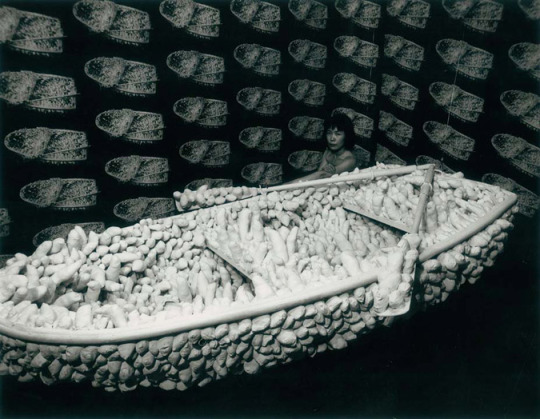
Years later, Warhol would debut his “Cow Wallpaper” installation in his April 1966 exhibition at Leo Castelli Gallery, featuring one of his most recognizable and famous designs. The similarity wasn’t lost on the art community. The Museum of Modern Art even mentions it in their interactive display about Kusama’s show, remarking that Kusama’s exhibit appeared 3 years before Warhol’s. However, Warhol credited an art dealer for the idea and did not mention Kusama.

Kusama would go on to have more ideas stolen from her by her peers, namely Claes Oldenberg and Lucas Samaras. When Kusama visited Claes Oldenberg’s exhibit and saw he’d taken her idea of soft sculpture, his wife approached her and apologized. Then, Kusama watched these ideas--her ideas--manifest in wealth and success that she could not herself achieve. She became paranoid and isolated herself, hiding her art. Her mental health deteriorated. This culminated in a suicide attempt.
After a bout of depressive episodes compounded by the rejection she faced upon returning to Japan, she checked herself into a mental health facility and has not checked out since. She still makes intimate art that addresses her trauma, psychosis, and other aspects of her life. She still says art saved her life. She is one of the most famous contemporary artists and her work has affected millions. But it took much longer for her to ascend to these heights than her white male peers who copied her ideas and we must examine why.
The line for plagiarism can be blurry; originality is harder to define in creative contexts. Some artists flirt with this line and some brazenly cross it. Yayaoi Kusama’s story demonstrates why even “minor” plagiarism is so insidious, even in ways that the plagiarizer may not have been aware of. These artists “drew inspiration” from her work and got fame and acclaim while she struggled to eat. The reason as to why it was easier for these men to achieve fame is clear: the art scene was heavily male dominated and almost entirely white.
Currently, the anti-Asian racism in the USA is at a fever pitch. Hate crimes have been on the rise since COVID-19 first began to spread in the USA, something many (including former President Trump) attributed to China, dubbing it “China virus.” I touched on this uptick in violence against Asians in 2020 on a separate blog post, but it has only gotten worse.
Then, 8 women were murdered in Atlanta on March 16, 6 of them Asian. I don’t want to derail the primary topic of this post and this event warrants a post all on its own, but it has become clearer and clearer that Asian women are not valued as much as their white counterparts, especially when those counterparts are men. This is true for all Asian people living in the USA. The pattern of devaluing the work of women of color is one that we can address within our own communities--racism and misogyny are systemic.
In the meantime, maybe we could let go of Andy Warhol a bit.
Sources:
https://www.bbc.com/culture/article/20180925-yayoi-kusamas-extraordinary-survival-story?
https://www.moma.org/interactives/exhibitions/1998/kusama/kusama_11.html
https://www.artspace.com/magazine/art_101/close_look/pop-art-ripoffs-the-3-yayoi-kusama-artworks-that-warhol-oldenburg-and-samaras-copied-in-the-60s-55636
https://www.nytimes.com/2021/03/16/us/atlanta-shootings-massage-parlor.html
0 notes
Photo

Women in punk!
Molly Flood, Creative Team Member
The Punk Movement was largely male-dominated, as much of the music industry is, but the women of Punk embodied the movement wholly and didn't receive adequate credit. The movement’s female artists highlighted the struggles of the female experience that didn't fit into the mainstream narrative. In their focus on anger and style of dressing, the women of the Punk Movement pushed back against societal norms more effectively than the more popular male bands could.
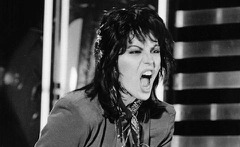
https://www.thefix.com/joan-jetts-bad-reputation
The anger and passionate unhinged expression were central to the Punk Movement and many of its subgenres. Punk women dominated in honing their anger through violent performances and shouting in sets. Seeing a male artist yelling on stage didn't bring the shock factor they thought it did. Angry men yelling about their problems has always been accepted by society and even encouraged. While the men yelled, Joan Jett and many other women in the Punk Movement yelled back, with iconic performances such as Jett’s “Bad Reputation”. Performances like this brought a sense of empowerment to the female experience and anger like never before and gave voice to the frustration marginalized groups had been and will continue to feel for decades to come.
What else did the women of the Punk Movement do exceptionally well? Style. Patti Smith embodied a hands-off effortless androgynous style rarely done at the time. With a short, shag-style haircut, oversized men’s clothes, and a bare face, Smith’s unique style pushed back on the patriarchy’s notions of how women in the spotlight had to dress to be accepted or well-liked. Smith's style perpetuated the punk movement theme of dismantling gendered clothing but personalized to her own gender identity.

https://www.flickr.com/photos/shemp65/5397827655
Women in Punk made a mark on the path of alternative rock that has forever shifted the trajectory of non-male artists in the genre. To honor women in March is to not look just at women in power today or the most famous figures in women’s history, but it is to take a step back and realize how much of your personal influence and inspiration wouldn’t be the same without the more niche contributions of women throughout history.
2 notes
·
View notes
Photo

A Love Story
Gracie Neirynck, Creative Team Member
Agh, February! The month of love. This month I was determined to present you all with a love story—cliché, I know. In my desperate quest for a love story, I scanned the internet, spending many hours skimming across its many whimsical love poems and falling victim to its endless rabbit holes. I even braved the journey into the desperate and truly dangerous land of the second page of Google (yes, turns out it does exist), determined to find the perfect love story. After many (oh so many) futile hours of reading about the many people littered across history who died for each other, killed for each other, wrote for each other, loved each other, this is the only love story I want to tell you all.
Allow me to set the scene: it is early in the morning, a tired 5 a.m. This is not the fun 5 a.m. It's not Saturday at 5 a.m. at the drive-through at Taco Bell coming back from a road trip. This is not the drunken 5 a.m., sitting on the kitchen floor with your friends waiting for the microwave to cook an entire bag of pizza rolls. You are not in an airplane looking out the window over to the lights in the city, wondering who is still awake. You have not woken up to begin that steep climb up the mountain, racing the sunrise to the top. No, this 5 a.m. is different. The hour where you feel like someone has taken your brain and rung it out like a washcloth, where your bones have turned to molasses under your skin and you are pretty sure that you are incapable of walking.
We open here, on an October 5 a.m. where my mother has just been woken up by contractions as she realizes that her first child is on the way. You can imagine the chaos that follows, the half-asleep rush to the hospital, and the many hours of labor. As my mom enters labor, she receives an epidural to numb the pain. While epidurals numb the pain of labor, they can also prolong it. This is what happens to my mom, who endures nearly 23 hours of labor before my sister is born. When midnight rolls around, everyone has fallen asleep as my mom is still not yet in active labor. My dad is passed out in the chair next to the hospital bed, but my mom refuses to go to bed.
There is an EKG hooked up to my mom's belly, recording my sister's heartbeat, making sure that my sister stays alive throughout the night. If my sister's heart were to stop beating at some point during, the nurses and doctors would be alerted. Unfortunately, my mom doesn’t know this. So, my mom, who has been in labor for nineteen hours at this point, forces herself to stay awake for the entire night, watching the rhythm of my sister’s heartbeat on the screen. Fighting off the sandman with grit, she stays up the whole night, her eyes glued to EKG, making sure that my sister’s heart keeps beating throughout the night.
She recounts this as stupid now, rolls her eyes and laughs at herself. She says she should have just gone to sleep, but she didn’t. So, there you have it: maybe a little atypical, but it's what comes to my mind when someone asks me to tell them a love story. We often think that romantic love stories are the ones worth telling, the grand gestures and dramatic speeches. However, most love stories to me aren’t romantic; they are quiet and humble and are easily mistaken for the dust and monotony of everyday life, and these are my favorite kinds of love stories.
0 notes
Photo

How the Swamp Inspired Me
Peyton Farnum, Creative Team Member
I love wildlife. I have ever since I was a child.
I grew up as a young girl living near the swamps of Savannah, Georgia. My dad and I would go for walks in the lush green forests that met with the wetlands of the coast. The nutria would swim down the bayous, making wakes with their tail as I watched them, crouched by the water’s edge. Tall cattail plants that seemed to reach as high as the sky would block my view until dad lifted me up onto his shoulders. The frogs would croak and form a rhythmic chorus that allowed the swamp to echo with life.
Dad would point at birds that swooped by and tell me the names of each species he recognized, encouraging me to mimic their calls alongside him. I’d look with awe and ponder how the swamp came to be so breathtaking. The wildlife of Savannah became my home, my childhood, and fostered my love for nature. Eventually, I grew taller than the cattails on the water’s edge, and circumstances led my family away from the swamps of Savannah.
After all this time, the swamp stuck with me. I remember the fondness I felt for the wildlife back then, and as I have grown, this fondness has found a home with another passion of mine: my love for art.
My dad, in our downtime away from the swamp, would hand me paint brushes or pencils and let me create whatever I wanted. The world became my blank canvas in these moments. I realized that creating was something so freeing, so sincere, so magical. Since then, I have held onto the feelings that those memories have given me: the intensity of discovering what I love so dearly.
Within these passions I have found happiness in combining these two parts of my identity. I incorporate animals and nature into my art at every opportunity possible, spending countless hours observing animals I see or read about. Every time I am struck with new inspiration, I fall in love with art and wildlife all over again.
As a college freshman, these passions still hold a special place in my heart, and I am certain that they are not going anywhere any time soon. Recently, I completed a portfolio project that focused entirely on endangered species, such as the pangolin, okapi, and Amur leopard. This project was not only intended to showcase my love for these animal subjects, but also to call attention to species that are in need in our world. It was one of my favorite projects of my artistic career so far, as I felt the message behind them was meaningful to a cause I feel strongly for. I think back to my younger self and I know that past me would be proud of all I have created.
I love wildlife, and I love art, and I owe it all to the inspiration that the swamp gave to me.

0 notes
Photo

Top 10 Tattoo Artists That Make Me Want to Cover My Skin in Ink
Peyton Farnum, Creative Team Member
In my many years as a creative-driven being, I’ve discovered that I have a great affinity for tattoo art. Tattoo practice is something that is taboo in our society because of its permanence. However, tattoo artists are just as credible as other artists, and their art is worthy of admiration and respect! Especially because there is much effort and tireless work that goes into being a professional tattoo artist.
So, to express my love for the world of tattoo art, I have compiled a list of my favorite skin-ink artists I found throughout the years. These artists come from all over the world and have phenomenal and unique styles. Just admiring these artists through social media fuels my desire to cover my whole body in beautiful artwork.
(All of the artists on this list can be found on Instagram)
1. m_tendo
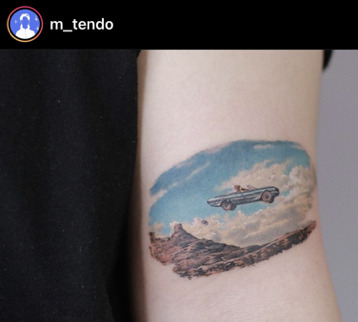
M_tendo displays stunning technique across many styles, including realism and abstraction. Their technique in using single needles for realistic pieces make for beautifully detailed end products that I could look at for hours.
2. zzizziboy

Zzizziboy’s graphic style has a special place in my heart. Their designs are simplistic, yet fun, featuring beautifully vibrant colors. In addition, all their work is handpoked, showcasing a fascinating tattooing technique.
3. anka.tattoo

Anka.tattoo’s displays incredible artistry in all of their drawings and tattoos. Their style walks a beautiful line between stylized and realistic. Not to mention their phenomenal technical linework and hatch shading!
4. xoxotattoo

Xoxotattoo’s work caught my eye because of their delicate linework. Most of their designs are completed with a single needle and intricate craftsmanship. You can obverse all the meticulous details in every one of their tattoos.
5. takemymuse

Takemymuse’s work is always a delight to see. Their designs are often simple linework combined with colored detailing, often in pastel color palettes. From animals to portraits, their tattoos always bring a fond emotion and a smile to my face because of their playful nature.
6. julianllouve

Julianllouve’s work displays interest and chaos in every piece. Their bright colors and crazy energies are nothing short of the epitome of psychedelic. I feel like I am looking at a museum-worthy surrealist work whenever I see their tattoos in my feed.
7. anniemesstattoos-blog

Anniemesstattoos has an incredible way of depicting figures in tattoos. Her linework is well crafted yet whimsical and beautiful. Many of her recent subjects focus on stylized depictions of women characters such as the Greek goddess Athena (pictured).
8. pitta_kkm

Pitta_kkm is a master of East Asian style in tattoos. Their pieces often include those of Korean legends such as dragons or stylized Korean clouds. Their tattoos are usually large, spanning whole sleeves, filled with vibrant colors.
9. bowsertattoos

Bowsertattoos pieces display a style that is both childlike and seemingly unsettling. Their works often feature black lined subjects that lack shading and depth. Their designs are simplistic yet haphazardous, that always leave me curious of the meaning behind the tattoo (if there is one)
10. 88world.co.kr
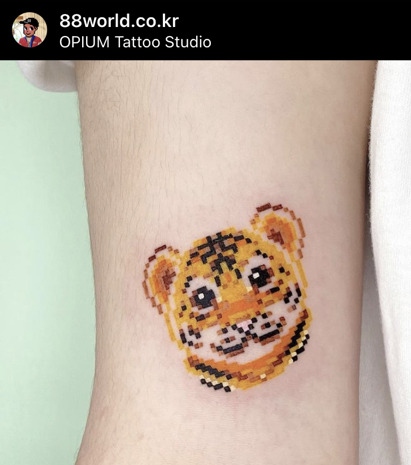
88world.co.kr has shown incredible success with pixelated style tattoos. Their pieces appear beautifully bold and rich in color, tied together by meticulous handiwork with each individual square pixel. They do a marvelous job of displaying clean lines on the surface of skin, which exists without a pixelated grid guide.
0 notes